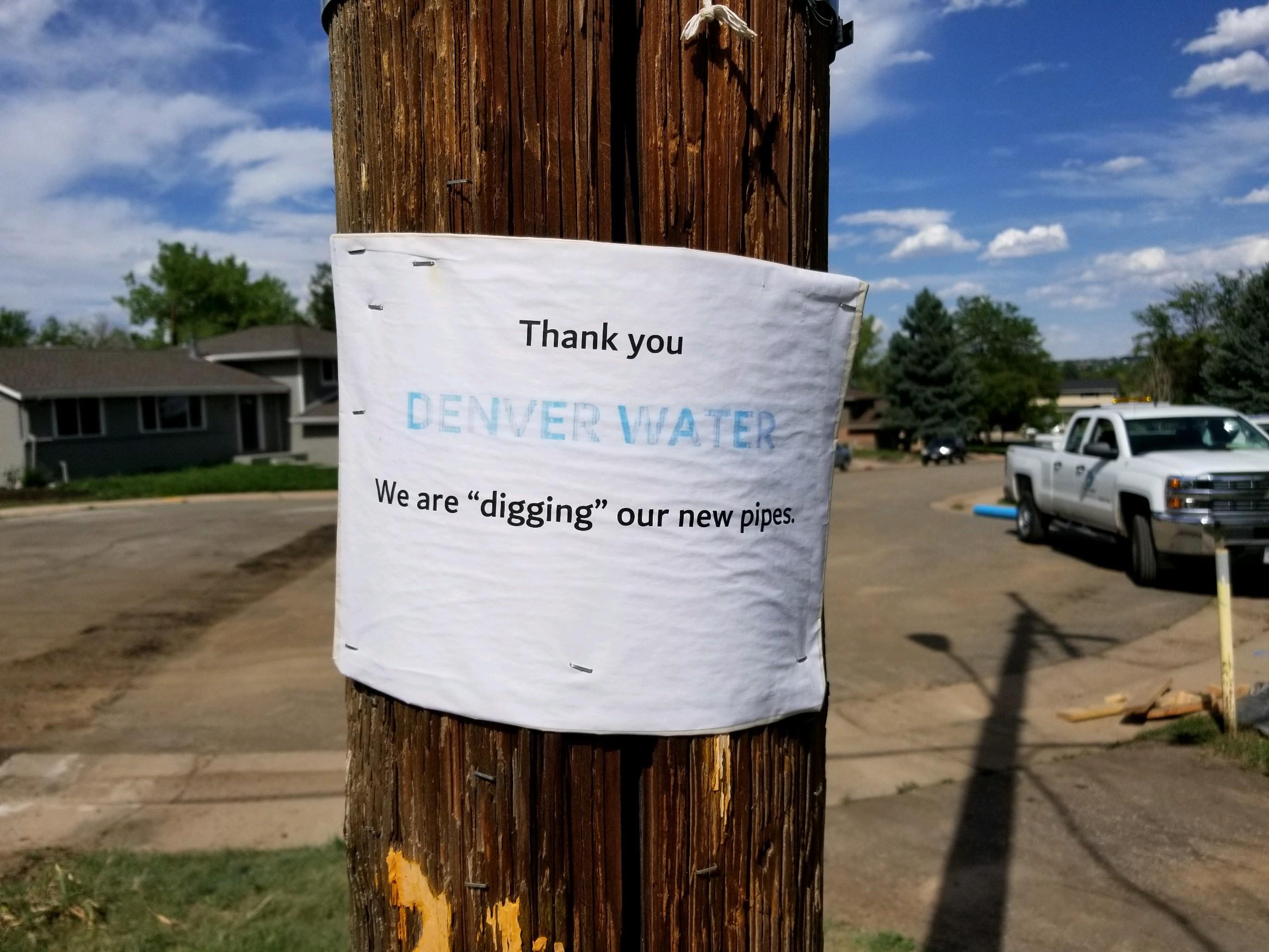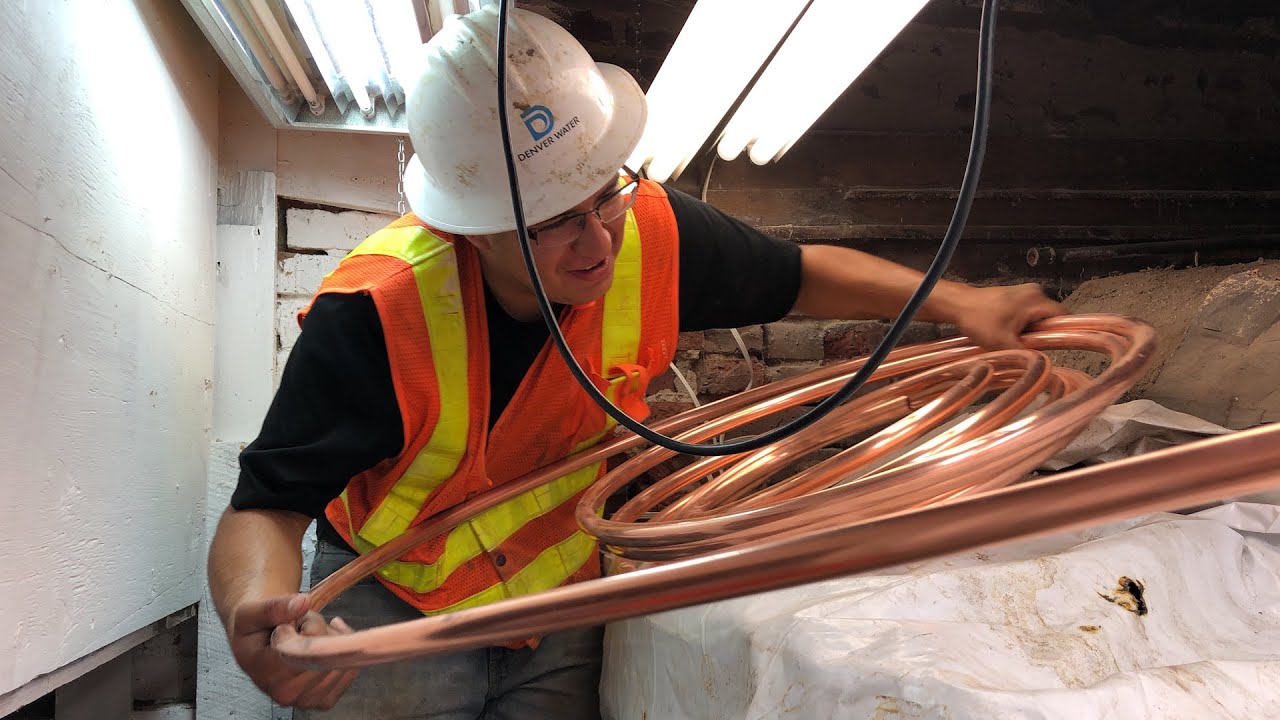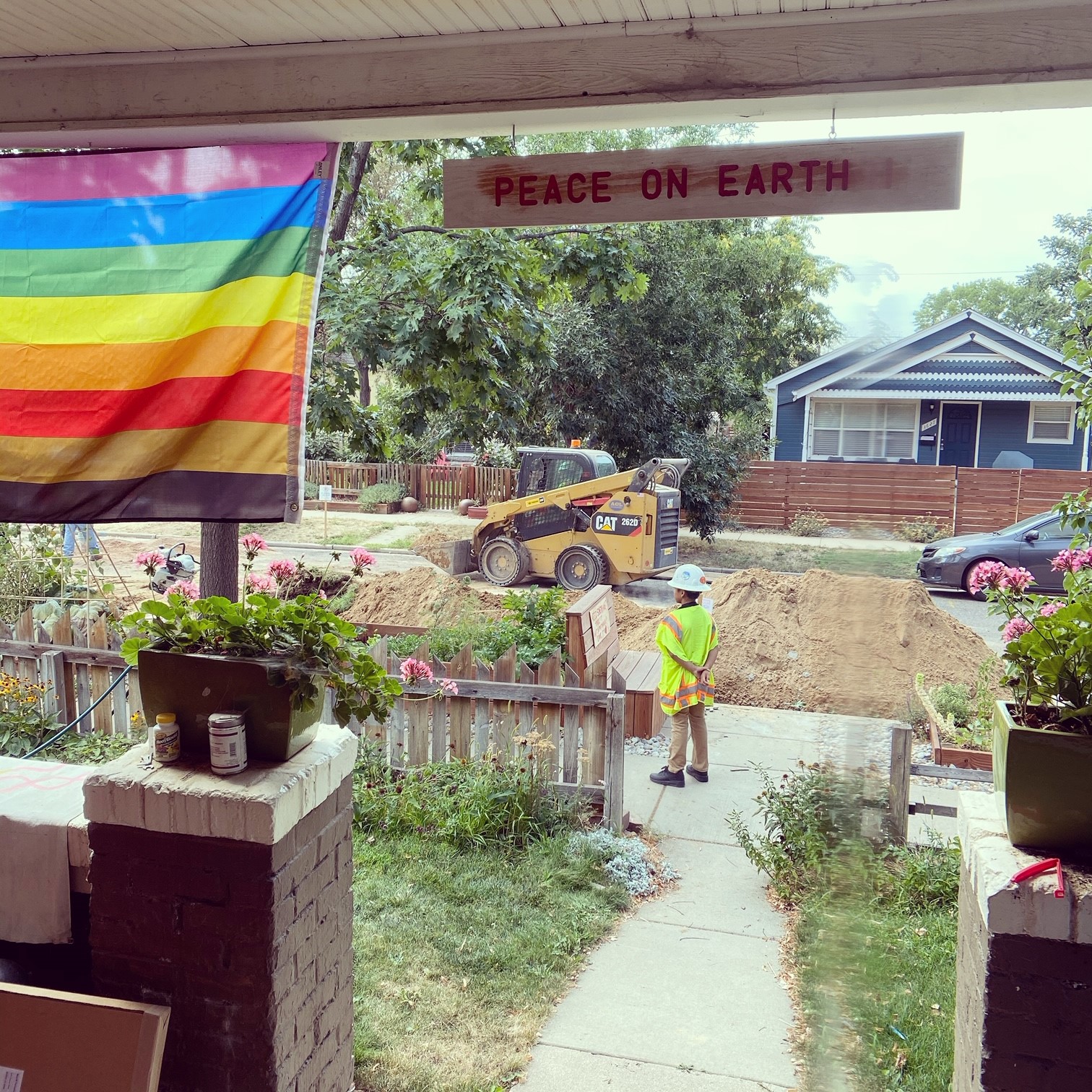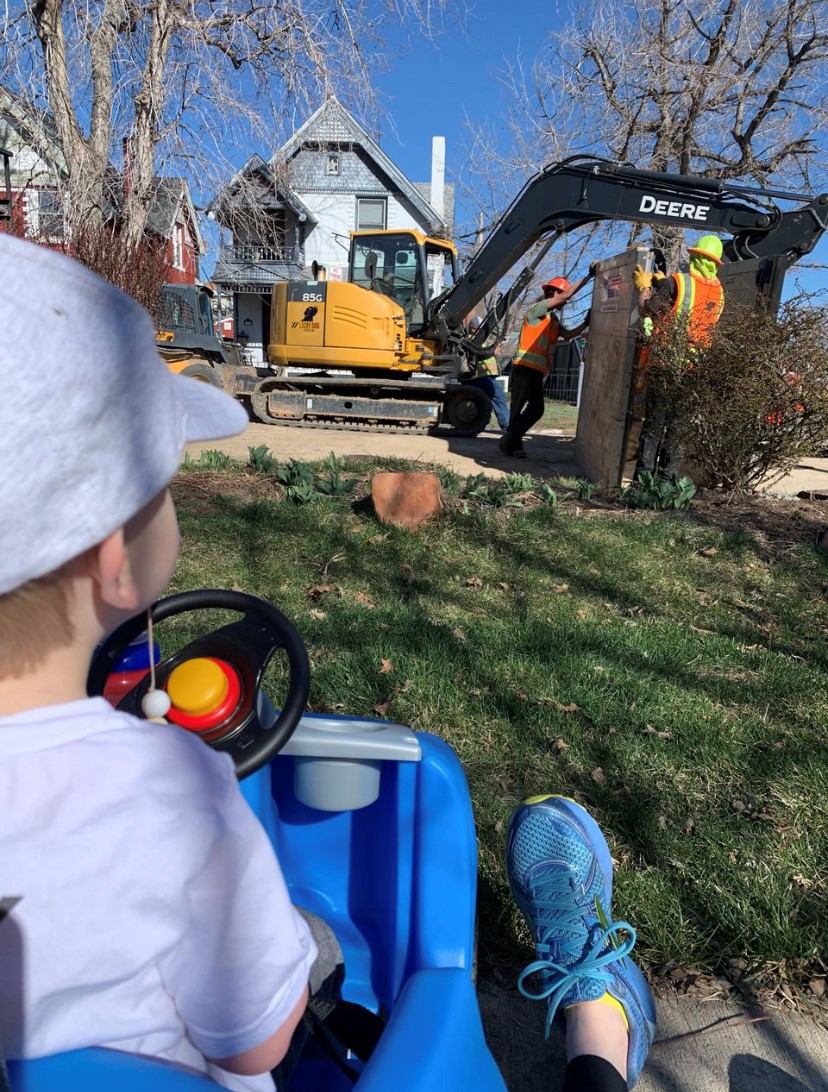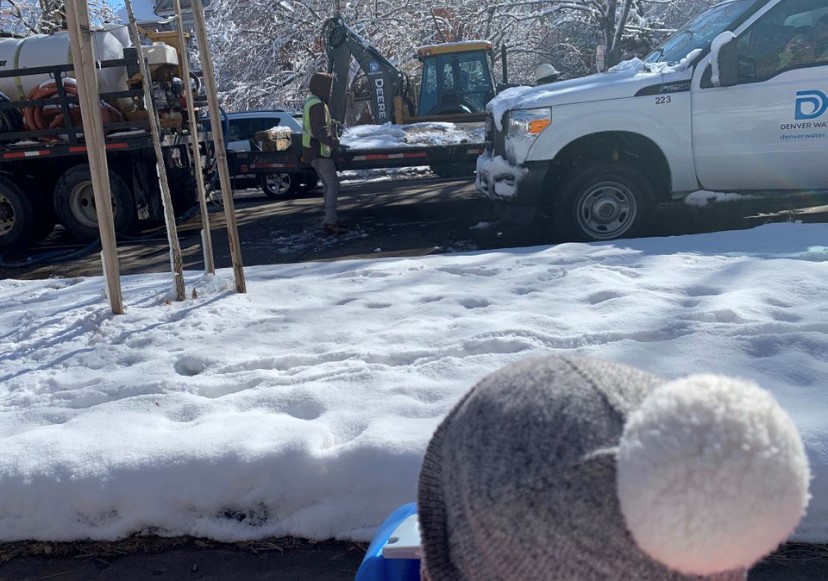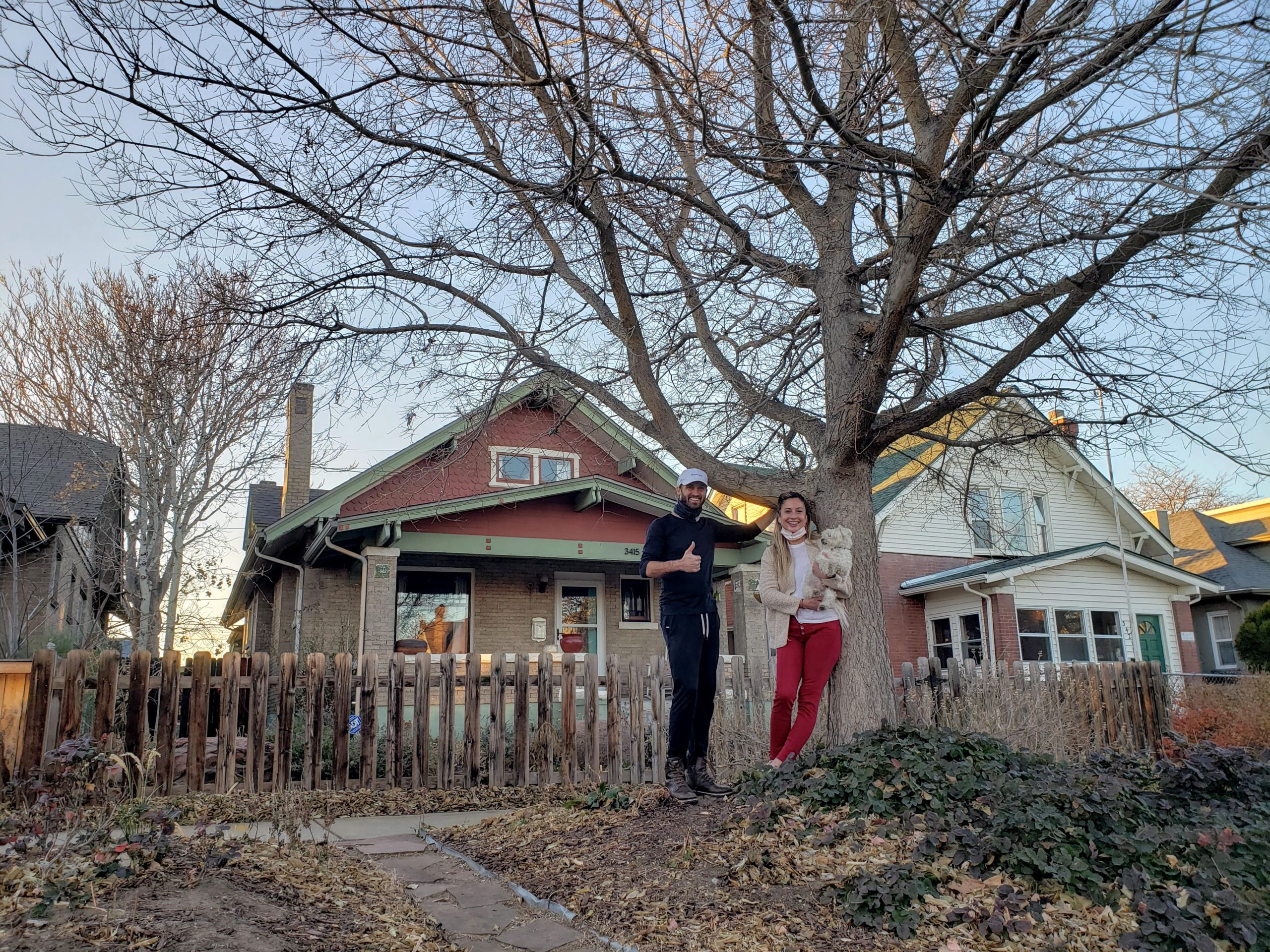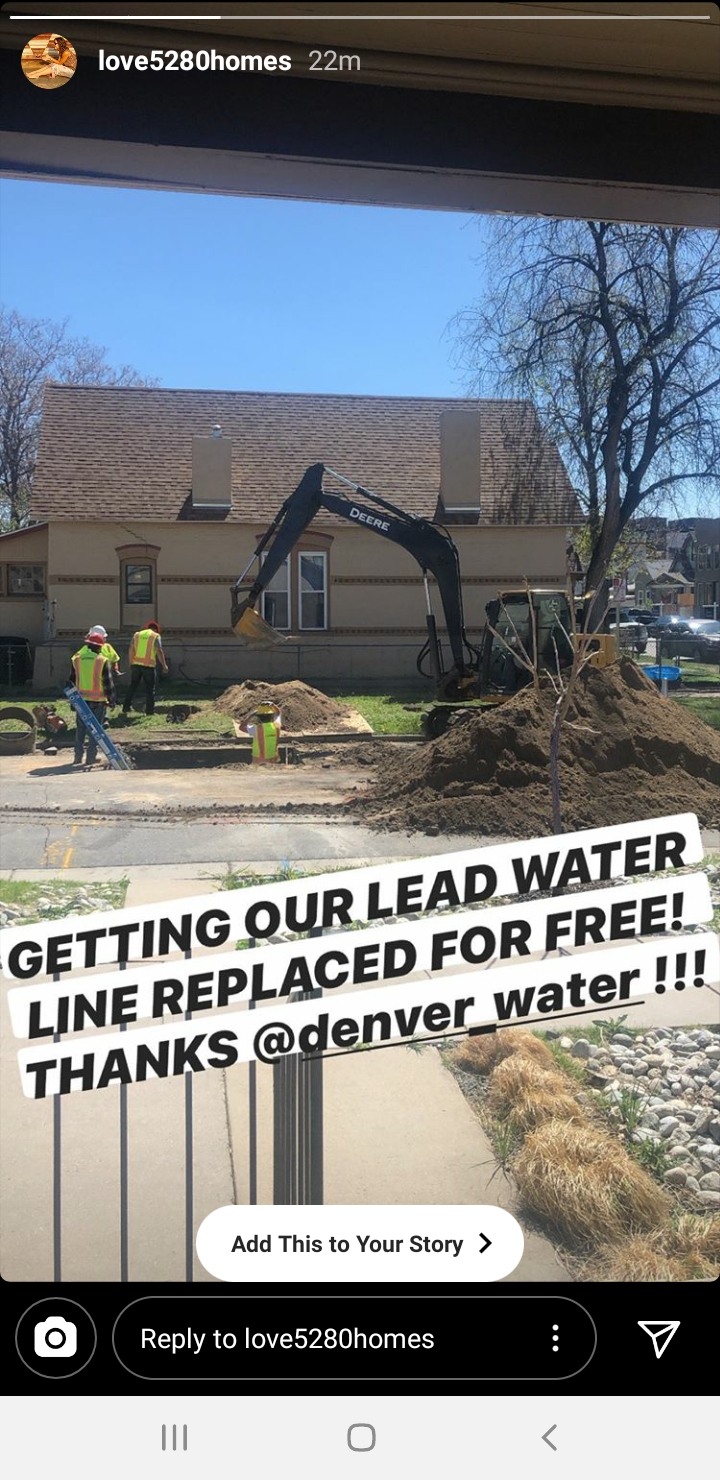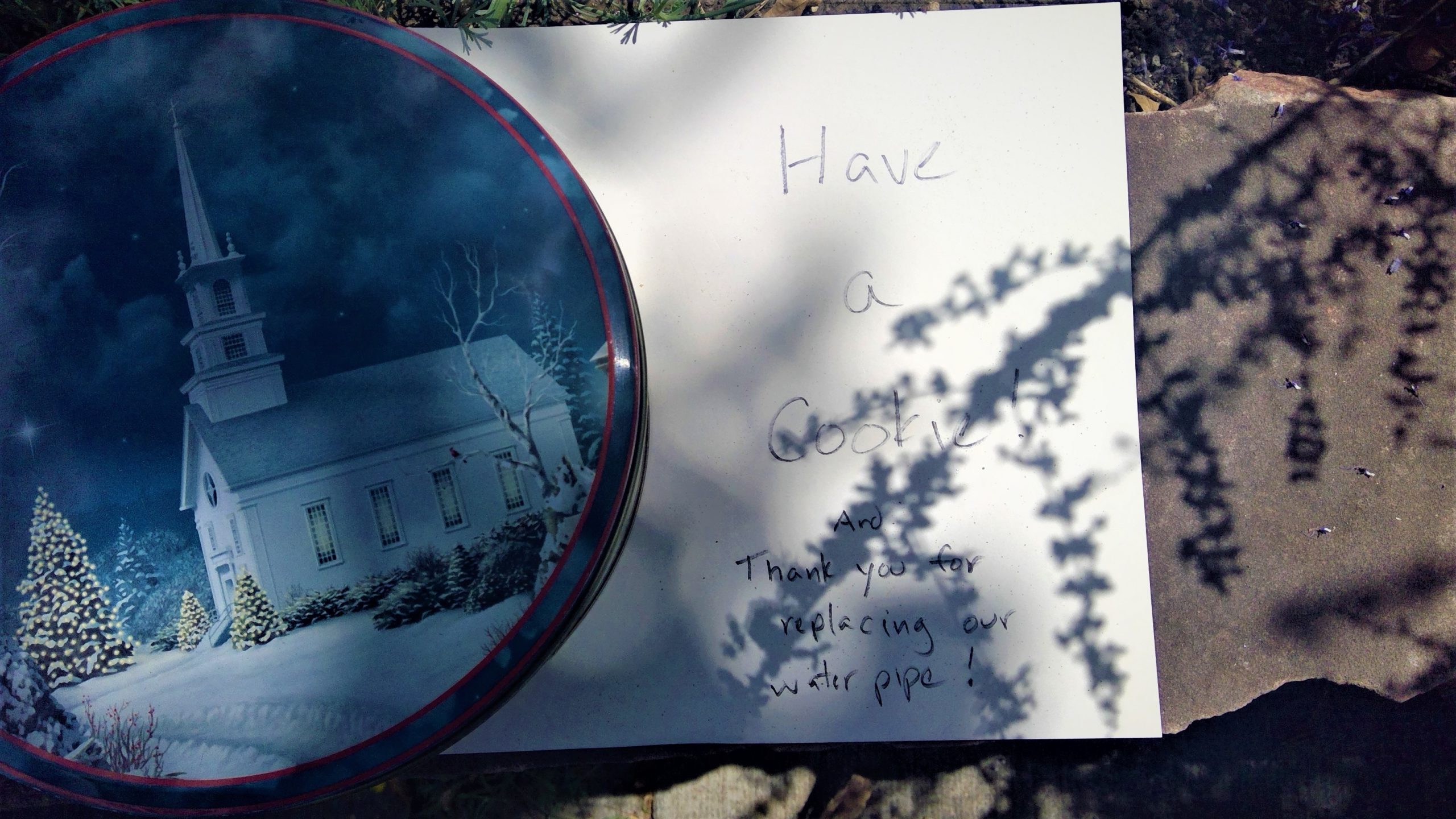
Appreciation runs deep for lead program
Throughout 2020, the first year of Denver Water’s groundbreaking Lead Reduction Program, many Denverites shared their experiences and appreciation via emails, phone calls, signs and social media posts.
At least one happy homeowner baked cookies for the crew.
The main sentiment?
Thank you, Denver Water! And thank you to the crew members who did the work!
Of course, program participants appreciated having their lead service lines replaced at no charge to them — ultimately saving homeowners the $8,000 to $10,000 it would have cost to better protect themselves from the potential for lead in drinking water on their own.
The praises, however, expanded past the tangible items.
Many homeowners focused on the time Denver Water workers spent explaining the process of replacing an old lead water service line with a new, lead-free copper line. The extra efforts were doubly appreciated considering the complexity and magnitude of the work that takes place in their yard and inside their homes. (Watch this video to learn more about what it takes to replace a lead service line.)
They also praised the care the workers took as they worked in and around their homes, in the middle of the COVID-19 pandemic, to protect themselves, the residence and — as part of the larger program — the public health of the community.
“This was year one of a 15-year project and when I’m talking to friends in other neighborhoods, I can say the contractors who are doing this are awesome,” said Maggie Thompson, a senior aide to Denver City Councilman Jolon Clark.
“I can tell them this is not a scary thing. The construction doesn’t last forever and then you have water without lead in it. It’s great and convenient.”
(See where lead service line replacement crews will be working in 2021 on this interactive map.)
Community members took time to share specific moments when workers, tasked with replacing about 4,500 old lead service lines in neighborhoods across Denver during the year, focused on them, not just the work at hand.
One crew wrote down information to better communicate with a deaf couple. Another helped a woman restart a balky car. Others stepped in to move a fallen tree that was in the way for one neighborhood.
For Thompson, the moment she remembers best is seeing a neighbor, a young boy fascinated by the big machines, watching a crew replacing lead service lines in the Clayton neighborhood.
“It was the cutest thing that I’d ever seen,” Thompson said.
“They could have very easily shooed him away, but they gave him his own hard hat and safety vest and stationed him at a safe distance. And his body language went from lurking and being curious to a Superman stance, like they needed him to make sure things went well.”
Molly Yost’s son also loved visiting the construction work taking place in their Washington Park neighborhood in the early days of the pandemic, when stay-home orders were in effect.
Her home isn’t in the Lead Reduction Program, as its original lead service line was replaced years ago. But she and her son followed the crews progress around the neighborhood.
“It was literally the highlight of those days, and our morning walks looking for the Denver Water project was our bonding time together. It gave us a sense of normalcy,” Yost said.
“As the crews moved from block to block, we would go find them because he was mesmerized by them. The Denver Water employees and contractors on-site were so friendly and open to us hanging out and watching them and if we had questions, they were so helpful,” she said.
On North Gaylord Street, Anna Ash is grateful to the workers who so carefully dug around the roots of an old hackberry tree before replacing her home’s lead service line, saving the tree for many more leafy springs.
It’s an old tree, planted years ago by a previous owner who loved plants and gardening, and that Ash, a floral designer who recently purchased the home, loves.
“I really, really, really, really didn’t want to lose this tree, and when the foreman came to the house and told me when they would be replacing my line, he said they’d probably have to remove the tree. I’d planted roses under it, but I was coming to terms with losing it,” she said.
Knowing that many of these lead service lines are in older homes, with some of the city’s neighborhood trees planted over or near them, Denver Water has been working closely with the city’s Forestry Department to figure out how to best protect the trees and root systems where possible.
In the case of Ash, the crew took that approach to a whole new level.
“When it was our turn, and the team literally went out there — I’ve never had service like this before — they listened, and they dug in with hand trowels. They dug around the roots and were able to bore the new line under the tree,” Ash said.
“They took the extra time to save this tree and it meant so much that they weren’t just looking at it as just the job. They respected my home and the yard that we’re trying to build here.”
And Ash, like so many others, praises the approach Denver Water is taking with the Lead Reduction Program and the value of having the program install a lead-free service line in her home.
“I’m blown away by their generosity for the good of the Denver community,” Ash said. “Not only are we drinking safe water but it’s a huge value-add to the properties.”


